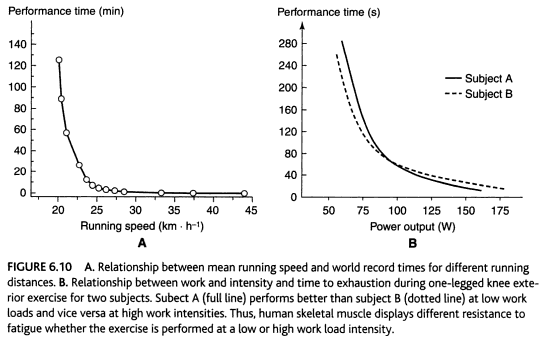Training Intensity Zones: Functional Threshold Power
 Functional Threshold Power (FTP) has become a very popular method for setting training intensity zones among cyclists. FTP seems to overcome some of the drawbacks of the other methods for setting training intensity zones that I’ve discussed so far.
Functional Threshold Power (FTP) has become a very popular method for setting training intensity zones among cyclists. FTP seems to overcome some of the drawbacks of the other methods for setting training intensity zones that I’ve discussed so far.
What is FTP?
Functional Threshold Power is generally defined as your power at your Lactate Threshold. We could just stop there and refer back to the previous discussion on Lactate Threshold. However, FTP is often determined by a different method than by measuring blood lactate. This is where it gets interesting.
Functional Threshold Power is also defined as the maximal sustainable power that you can produce for one hour. Often, the normalized power for an athlete during a one-hour time trial is used as the Functional Threshold Power. No blood draws are required. Other methods to calculate FTP are based on a 20 or 30-minute maximal effort that utilize a factor to compensate for the shorter effort.
Calculating FTP in this manner separates it from the concept of Lactate Threshold from a practical point of view. The test is actually agnostic about what is limiting performance. It simply measures the maximum sustainable power load.
The notion of a maximal sustainable power load is consistent with the hyperbolic relationship between power and time to exhaustion that is observed. The following chart from ACSM's Advanced Exercise Physiology shows this relationship. The concept is that there is a small range of exercise intensity where the time in which the intensity can be sustained goes from hours down to minutes.

While FTP is generally associated with cycling, the parallel notion of a functional threshold pace in running is apparent in the chart above. It is common to see training intensity prescriptions for running to apply training intensity zones based on a “10K race pace” or a “half marathon race pace.” This implies the importance of the relationships in the chart above.
Functional Threshold Power seems to be an important value for trainers to know when they develop training prescriptions for their clients. They can prescribe short workouts above the FTP and longer workouts below the FTP depending on the type of adaptations they are looking to help the athlete achieve.
How FTP is Used to Set Training Intensity Zones
FTP is used in place of power at Lactate Threshold, and the additional training zones are determined as a percentage of FTP. Here are some examples:
Many software packages allow users to scale preprogrammed workouts based only on their FTP. These include software like Training Peaks, PerfPro, and PeriPedal.
Discussion on FTP
It’s a bit unfortunate that FTP was developed as an attempt to relate to Lactate Threshold because the concept of Lactate Threshold is seriously flawed. However, most practitioners of FTP tend to avoid this problem by calculating FTP and implementing its training zones without actually relying on blood lactate measurements.
FTP overcomes the flaws of Maximum Heart Rate and VO2 Max, where endurance training zones are based on a short-term, all-out effort. Unlike these two metrics, FTP training intensity zones are based on actual endurance performance intensities. That’s a step in the right direction, but FTP still bases training intensity zones on the percentages of a single point; what if not all athletes have their optimum active recovery training intensity at 55% of FTP?
FTP has some other important limitations. FTP returns just one data point after a minimum 20-minute test. In other words, it doesn’t give any real time feedback. It is not completely practical to measure FTP every day. Moreover, it doesn’t really make sense to measure FTP to see if it is lower today because of a hard workout two days ago.
The subjective nature of FTP also brings up some questions. How can you ever know if you pushed as hard as you could for an hour? How much of a role does motivation play?
FTP is a completely external measure. It doesn’t provide any information on what’s going on inside the body. More importantly, it doesn’t provide any information on what you need to do to improve your FTP. Essentially, everyone with the same FTP will be given the same workout prescription. The physiology of athletes is more than one dimensional.
You can’t just measure someone’s waist size and make them a tailored suit. You need more information. The same is true when using FTP to set training intensity zones. This is where Muscle Oxygen Monitoring comes in. In the next post, I will look at how Moxy can be used to really tailor a training program to each athlete.


